Jeremy T. Ringfield's Blog, page 422
July 12, 2024
Mike Dunleavy Jr. details Klay Thompson’s Warriors legacy, departure
LAS VEGAS — Unless the Warriors land an All-Star caliber player, this summer will be remembered as the offseason Klay Thompson left.
After a pair of difficult seasons, Thompson decided to seek a fresh start and joined with Dallas Mavericks. For the defending Western Conference champions, Thompson will space the floor around Luka Doncic and Kyrie Irving in a new role and a new city.
“I’m very grateful for my time at Golden State,” Thompson said at his introductory press conference in Dallas. “But I just felt like moving on can just reenergize me and do something special for the rest of my career…Sometimes breakups are necessary.”
It was noteworthy that Warriors general manager Mike Dunleavy Jr. began his meeting with local media at Summer League with an ode to Thompson.
“Can’t reiterate enough what an unbelievable career he had for us,” Dunleavy said. “So much he’s given to the Bay Area, to the organization. What else can you say? Just an unbelievable run. It’s sad. We’ll miss him. But life goes on. I think he’s in a good spot. There was really good, solid communication throughout the whole process. He expressed his interest in a fresh start. Working with him and obviously Dallas to make that happen, I think it benefitted both sides.”
The breakup came after 13 seasons and four NBA championships. Specifics of it are somewhat murky. The Athletic reported that Thompson and his camp sent contract proposals this summer that didn’t get countered. Before the season, Thompson reportedly rejected a two-year, $48 million extension that proved to be above-market.
Steve Kerr and the Warriors brought Thompson off the bench for much of the second half of last season and postured that a reserve role would be the status quo for Thompson if he returned. For the Mavericks, Thompson is likely to start.
The Warriors sent Thompson to Dallas in a six-team trade — the first of its kind. In return the Warriors added Kyle Andreson and Buddy Hield. Chris Paul’s non-guaranteed contract also gave them the cap flexibility to acquire De’Anthony Melton.
Dunleavy said he’s excited about the current group, but will continue to look to improve.
Related ArticlesGolden State Warriors | Warriors GM Dunleavy open to more moves this summer to elevate Curry-led roster Golden State Warriors | Warriors’ Podziemski, Jackson-Davis reflect on USA Select Team experience: ‘We brought it to them’ Golden State Warriors | Steve Kerr’s U.S. Olympic team shakes off rust in game vs. Canada Golden State Warriors | Podziemski, Jackson-Davis join Summer League squad as Warriors hoist Mitch Richmond Trophy Golden State Warriors | Kurtenbach: If this is all the Warriors can do, it’s not good enough for Steph CurryStill, life without Thompson will certainly be different.
“Nothing lasts forever,” Dunleavy said. “But I think it ended well, and wish him luck in the next chapter of his career. He’ll always be a Warrior. Go into the Hall of Fame as a Warrior. Number retired, statue, all that stuff.”
The final moment of Thompson in a Warriors uniform is his 0-for-10 scoreless performance in the play-in loss to Sacramento.
Curry, Draymond Green and Steve Kerr each publicly expressed their desires for Thompson to return and retire as a Warrior last season. For one reason or another, it didn’t come to pass.
“I think everybody was understanding in terms of what Klay wanted out of things,” Dunleavy said. “This whole thing was incredibly amicable. I know people want to make a big deal out of it because Klay was here 13 years and a legend in his own right. So many championships and all that. How things end can be tough. But the situation, like I said, was pretty reasonable. Pretty mature conversations, and everybody’s ended up in a good place. I think I feel good with where we’re at. At the same time, there’s some nostalgia with Klay being gone. Kind of sad, he’ll be missed. But like I said, it doesn’t last forever.”
Rosine’s Restaurant owner describes mother, founder’s impact in Monterey
MONTEREY >> The owner of Rosine’s Restaurant likes to think it has a place in the hearts of many in Monterey not only for the food and atmosphere, but for the service offered by the staff members from managers to waitresses.
Jim Culcasi, owner of the popular Alvarado Street restaurant, says that passion for service and kindness stems from his parents, particularly his mother.
Rosine Culcasi, the co-founder of Rosine’s, died at the age of 85 on July 9, following a stroke. The restaurant staff announced her passing in a social media post Wednesday, with a message from the Culcasi family.
“To know Rosine was a blessing. We will remember her integrity, her endless generosity and her commitment to excellence that spanned generations,” the statement read.
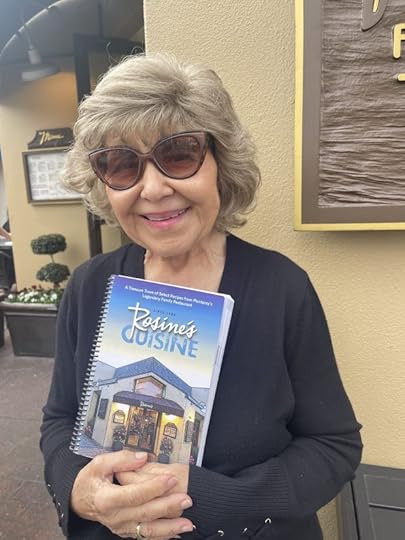 Rosine Culcasi, co-founder of Rosine’s Restaurant, died July 9. (Courtesy photo)
Rosine Culcasi, co-founder of Rosine’s Restaurant, died July 9. (Courtesy photo)Rosine’s opened in 1980 in Del Monte Center and later moved to Alvarado, a dream of Rosine and her husband Jim Sr. Today, the restaurant is a staple in Monterey, offering large portions that include their signature desserts. Rosine retired in 1991, to allow her children to take over more of the business, but she always loved to cook and continued to do so for many more years.
“When she retired, she wasn’t ready to retire,” Jim Culcasi said. “She would come in every Tuesday for meatloaf and baked all her pies on Fridays. People would line up around the corner on Fridays for those pies, she made the best pie crust. You could pop a piece into your mouth and it would just melt. To this day it’s something I haven’t mastered yet.”
Rosine Culcasi was known for her positive and giving spirit, but also her way of living life to the fullest her son said. She was big on family and she extended that kindness to those who stopped by the restaurant.
“She started cooking when she was 5 years old, and her mother was very social, so that’s how she’s always been,” Culcasi said. “I would go into the back of the restaurant wondering who has this loud music playing, thinking it was my employees, but it was my mother. That was how she was, she loved her loud music and driving fast cars.”
Culcasi said he believes his mother’s caring personality has been passed down throughout the family, and even into the restaurant staff who are also mourning her passing.
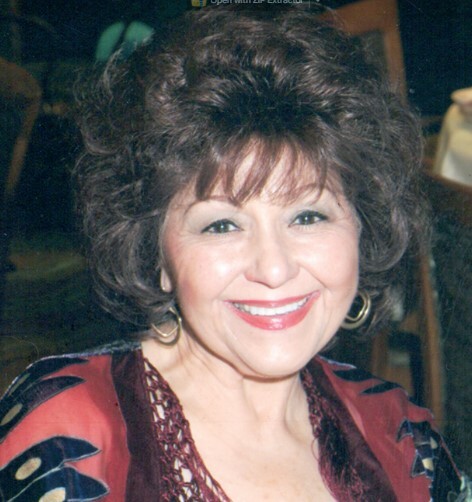 Rosine Culcasi, the co-founder of the popular Rosine’s Restaurant in Monterey, died July 9. (Courtesy photo)
Rosine Culcasi, the co-founder of the popular Rosine’s Restaurant in Monterey, died July 9. (Courtesy photo)“I grew up with it, and it’s so natural,” Culcasi said. “She made me humble because she was so humble, and in a way I think I took it for granted. She’s always been my angel, but I didn’t realize just how special she was. There are people that have dined at our restaurant one time and they wrote me recently to share what that interaction with my mother meant to them.”
There will be a memorial mass for Rosine Culcasi at 9:30 a.m. Thursday, July 18 at San Carlos Cathedral, 500 Church Street. All are welcome to attend.
Pro Soccer: Monterey Bay F.C. to host Tulsa Saturday night
SEASIDE — Looking to build off its recent road win, Monterey Bay F.C. returns to Cardinale Stadium Saturday to host FC Tulsa at 7 p.m.
The match will be televised by KION on FOX 35 (46.2 over the air, 35 Dish, 47 DirecTV and 3/702 HD Xfinity), with live streaming available on ESPN+.
Having won two of their last three matches after a 1-7-1 stretch — including a loss in the U.S. Open Cup — the Union (7-8-4) currently sit in fifth place in the United Soccer League Championship Western Conference with 25 points.
Last week’s 1-0 win in Pittsburgh snapped a five-game road losing streak. Injuries have crippled the Union’s offense over the past 10 weeks, as evidenced by them failing to score in seven of their past 13 matches.
Last week, goalie Carlos Herrera stepped in for an injured Antony Siaha and recorded a career-high and team-record eight saves in posting his first shutout of the season, earning USL Championship Team of Week honors.
Siaha, who is listed as probable for Saturday, still leads the USL in saves with 73.
The Union will again be without the services of six players, while former Cal State Monterey Bay standout Walmer Martinez is listed as questionable.
Making its first appearance at Cardinale Stadium, Tulsa is 4-6-5 this season, having gone 2-1-1 in its last four matches. The Union come into the battle sporting a 4-2-3 record at home.
Prior to the match, Monterey Bay FC2 will face Almaden FC in its regular season finale at 3 p.m. in a rare doubleheader at Cardinale Stadium.
The first 2,000 fans entering the stadium will receive custom yellow and red cards.
Explore the California spot serving up weed country fun the wine country way
Adam Tschorn | Los Angeles Times (TNS)
As you drive through some of California’s most storied agricultural land, a few hours north of the Bay Area, you’ll zoom past fields full of plants straining under the weight of their almost-ready-to-harvest bounty. After checking into your boutique hotel, you’ll get to sample some of the local flavor and watch the setting sun. The next day, you might explore some of the region’s historic spots. Or maybe you’ll attend a friend’s wedding on a ranch next to a working farm.
At the end of the weekend, you’ll drive home with some of the local wares and likely a deep emotional connection to the place you just visited. That may sound like a classic wine-country excursion in the Napa or Sonoma valleys, but what if you swapped in pot plants for grapevines and consumption lounges for tasting rooms? What would a weed head’s version of the wine-enthusiast weekend look like?
To find out, I headed to Mendocino County, one of three counties that make up California’s famed Emerald Triangle, the historic cannabis-growing region of the state since the 1960s. (It’s roughly triangle-shaped, with corners of its wide base in Humboldt and Trinity counties.) The Emerald Triangle turns out to be the perfect place to court canna-tourists the wine-country way.
As the southernmost point of that triangle, Mendocino County has a bonus. It’s much closer to major population centers such as San Francisco (about 110 miles) than Humboldt or Trinity counties (270-plus miles). It’s also home to the 15-mile-long Anderson Valley, whose warm days, cool nights and maritime fog close to the coast make for top-notch pinot noirs but also, according to the region’s cannabis farmers, give the sun-grown herb here a distinctive terroir.
As a visitor might quickly discover, smaller cultivators are favored over industrial-size farms here, and the county tourism commission actively courts the budding canna-tourism market. Mendocino County has emerged as one of the best places to explore craft cannabis the way folks have long adventured their way through wine country.
So if you’re looking for an alternative adult getaway any time of year (though the pot plants are bigger closer to harvest in the fall), make sure the places listed below are high on your list of Mendocino County must-visits. Just remember, if you’re going to smoke up along the way, pick a designated driver.
Drive the Cannabis TrailCreated in the spirit of the state’s Wine Road and Cheese Trail that provide self-motivated visitors with a rough DIY points-of-interest itinerary, the Cannabis Trail highlights some of the people, places and seminal moments in the history of the marijuana movement with special plaques.
The entirety of the trail includes more than two dozen monuments, cultural landmarks and points of interest stretching across nine counties, with a handful of stops in Mendocino County. These include Area 101 in Laytonville (the birthplace of the 20-year-old Emerald Cup cannabis competition) and the Plantshop dispensary in Ukiah (where a plaque commemorates the back-to-the-land movement of the 1970s).
While the Cannabis Trail isn’t exactly a new effort (it was launched nearly a decade ago by cannabis travel consultant Brian Applegarth), its partnership with tourism boards that highlight stops in Mendocino and Humboldt counties and Oakland is. And that’s a result of increased cannabis-related tourism, says Visit Mendocino County’s executive director, Ramon Jimenez.
“Since leisure-use cannabis legalization, Mendocino County tourism has seen a constant uptick in visitors, about 60% more annually since 2017 [based on Transient Occupancy Tax collections],” Jimenez said. “As travelers become more educated, they want to move past the lounges and dispensaries to an authentic place of source. … This growth has spurred a new co-op between Visit Oakland, Visit Mendocino County and Humboldt County Visitors Bureau [focusing] on the Cannabis Trail.”
Watch hash get madeOne of the fun things about touring a winery is getting to see some of that behind-the-scenes magic before you hit the tasting room; the immense stainless steel vats, the wooden barrels stacked floor to ceiling and the bottles clattering along an assembly line.
Mendocino’s weed country has its own version of that — kind of — at Heritage Hash Co. (1076 Cunningham St., Ukiah, heritage-mendocino.com). That’s where, inside a corrugated metal and weathered wood building, you’ll find a full-service multi-brand dispensary heavy on local wares. That’s where you’ll also find a square, wood-framed window that allows you to watch solventless hash being made by hand on-site in what looks like a cross between an industrial kitchen and Willy Wonka’s chocolate factory. Only instead of Oompa Loompas, it’s white-coated hash makers stirring cauldrons with comically large paddles, squeezing rosin in presses and pulling gooey strips of freshly made concentrate like saltwater taffy. (And, yes, just in case you were curious, there are plenty of immense stainless steel vats involved here too.)
And because Heritage, which bills itself as the world’s first public hashery, happens to also be permitted for on-site consumption, you can lean further into the tasting-room vibe by buying some of what the brand makes (extracts that range from $25 to $65 a gram) behind that magical window and trying it before you head out. (But only if someone else is behind the wheel.)
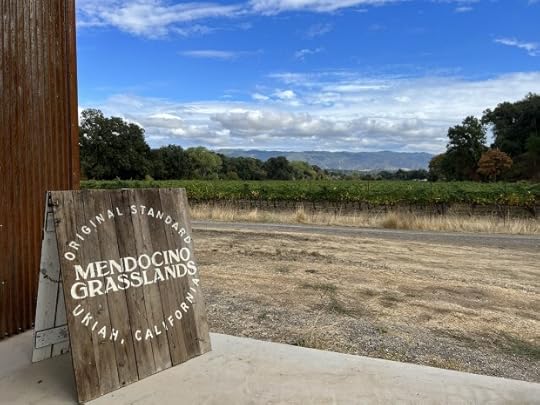 A field of grapevines viewed from Mendocino Grasslands, a working cannabis farm adjacent to Yokayo Ranch. (Adam Tschorn/Los Angeles Times/TNS)Throw a weed-friendly wedding
A field of grapevines viewed from Mendocino Grasslands, a working cannabis farm adjacent to Yokayo Ranch. (Adam Tschorn/Los Angeles Times/TNS)Throw a weed-friendly weddingIf your dream wedding involves saying “I do,” complete with a joint-rolling bar at the reception and a tour of the working weed farm next door, you’d be hard pressed to find a better setup than the one at Yokayo Ranch (800 Hensley Creek Road, Ukiah, yokayoranch.com). That’s where Rachel Powell has been booking nug-filled nuptials along with other weed-friendly events since deciding to embrace the cannabis tourism culture in 2019.
“We get people from all over,” Powell said. “But most of our clients are from San Francisco and L.A. and they’re much more interested in the cannabis (aspect). We realized that it can really play to our strengths. For example, a lot of our people want to have cannabis bars versus alcohol [bars].”
The property, which can accommodate about 45 overnight guests, consists of a 1920s-era main house, a cluster of cabins, nine glamping tents (each with a queen bed) and an outdoor ceremony space, all on a hillside high above Mendocino Grasslands. That’s the neighboring weed farm run by Powell’s brother, Ian. “When people come to stay for a wedding, we let them know there’s also a farm and we’d be happy to give them a farm tour,” she said. “And every group wants a farm tour.”
The brother-sister duo are hoping to eventually expand the farm-tour offerings to the general public. Right now, they’re mostly arranged for guests who are renting the Yokayo Ranch venue. “We’d like to offer tours that can be booked directly through Mendocino Grasslands,” Powell said. “And they would end with a farm dinner where people break bread in this really beautiful place where they’re surrounded by food, flowers and cannabis — all of these things that come from the ground.”
She added that the ultimate goal is to source everything for these meals (“Right down to the quinoa”) from within 25 miles of the farm. Wedding event packages, which include two nights of lodging for up to 29 people, start at around $20,000. If you’re not tying the knot but want to rent the whole place, you and your buds can plan on $2,400 to $3,500 per night with a two-night minimum.
 A glass case at the Bohemian Chemist apothecary is a showcase for the brand’s cannabis products, which are grown in a nearby part of the Anderson Valley. (Adam Tschorn/Los Angeles Times/TNS)Make your way to the Madrones
A glass case at the Bohemian Chemist apothecary is a showcase for the brand’s cannabis products, which are grown in a nearby part of the Anderson Valley. (Adam Tschorn/Los Angeles Times/TNS)Make your way to the MadronesIf you’ve got the bandwidth to visit only a single Mendocino County destination — or simply want to see what a fully realized weed-country-is-the-new-wine-country world can look like — blaze a trail down the Anderson Valley Highway to the Madrones with its on-site dispensary (9000 Highway 128, Philo, themadrones.com and thebohemianchemist.com).
A Mediterranean-meets-rustic-California compound bordered by a vineyard on two sides and dense forest on another, it’s the creation of partners (in business and life), Jim Roberts and Brian Adkinson. The boutique property includes a nine-room hotel (rooms, which accommodate two to four people each, start at $285), an on-site restaurant specializing in wood-fired fare (the Wickson) and two winery tasting rooms (Long Meadow Ranch and Wentworth Vineyards). A bottle cork’s toss down the road is another cluster of cabins and a wedding venue surrounded by redwood trees (the Brambles). Also, keep a look out for the ghost-white cat named Blanche roaming the grounds.
What makes the place of special interest is a tiny shop just to the right of the front door. Called the Bohemian Chemist, it’s a dispensary with the vibe of an Art Deco apothecary. Its glass and wooden cabinets and display cases are stocked with cannabis products and accouterments, both heavy on the local offerings. The shop’s namesake brand is sourced (mostly) from the owners’ Sugar Hill Farm just down the road; uncommon cultivars of sun-grown herb with names like Swazi Gold or Big Sur Holy Weed that even the most seasoned weed head probably hasn’t laid eyes (or lungs) on.
Its focus on rare cultivars has earned it a cultural landmark stop on the Cannabis Trail.
Other local brands on the shelves crammed with bell jars and vintage microscopes include packets of Anderson Valley Reserve flower, hash and live rosin badder from Heritage Hash Co. Locally made paraphernalia options include glass pipes from CoolHandSuuze and an exclusive edition of the Proto Pipe, the Swiss Army knife of pot pipes, made just about 50 miles up the road in Willits.
Customers who avail themselves of the shop’s cannabis can decamp to a small outdoor patio space just off the hotel’s gift shop and consume their locally grown goods while gazing out at the rows of grapes in Goldeneye’s vineyard next door. If your visit happens to fall between late May and late October, this is where you’ll find a seasonal third-Sunday-of-the-month cannabis farmers marketplace offering a showcase local legacy brands. (The full calendar and additional information can be found on the Madrones’ website.)
Roberts and Adkinson, who had been growing cannabis legally on their farm since 2016 (under the state’s pre-Prop. 64 medical marijuana law), opened the hotel property in 2010 and then the dispensary in June 2020 after being directly inspired by the wine-tourism business model.
“The retail part stemmed from the fact that we would have visitors who wanted to purchase cannabis, and we’d have to send them up to Ukiah,” Adkinson said.
“We had this crop growing,” added Roberts. “And we’re thinking, ‘What’s going to be the best way to actually get it to market?’ And we looked around at all these little wineries that are on our property and thought the best model would be to do something like they did. They sell [wine] at the tasting rooms. They have [wine] clubs and they have bottle shops. We knew that those three pillars provide a pretty strong foundation for a small winery, and we figured the same thing could happen with cannabis. So we got a micro-business license that allowed us to do all three of those things.”
The couple says the cannabis side of their business isn’t immune from the challenges facing the rest of the state’s legal weed business such as regulations, high taxes and a thriving illicit market. But approaching their business like the small wineries that surround them has paid off.
“We’re not exactly making a killing,” Roberts said. “But [2023] was a hard hotel year because of all the weather incidents, and the cannabis business actually floated the hotel business. And it had been the other way around as a startup.”
With almost four years under their belt of running the only dispensary in Anderson Valley, the couple has discovered that catering to wine country and weed country visitors has a certain synergy, specifically that their best sales day of the year isn’t on 4/20 or the day before Thanksgiving. It’s during the annual Anderson Valley Pinot Noir Festival the third weekend of May each year.
“It’s typically something like this,” Roberts said. “A woman will come into the Bohemian Chemist and say, ‘My husband loves wine but I don’t really care for it that much. But now we can both be happy because I love cannabis.’”
©2024 Los Angeles Times. Visit latimes.com. Distributed by Tribune Content Agency, LLC.
Alfred Diaz-Infante affordable complex at East Garrison has grand opening
SALINAS – The completion of a new affordable family rental housing complex was celebrated with a grand opening and ribbon-cutting ceremony on Thursday with many of the nearly 100 in attendance lauding the work and legacy of the man for which the development is named.
The Alfred Diaz-Infante Apartments in the East Garrison community comprise 66 one, two and three-bedroom affordable units, 43 of which house farmworker households, and one of which houses an on-site manager. The all-electric complex includes a community room, central patios and play areas.
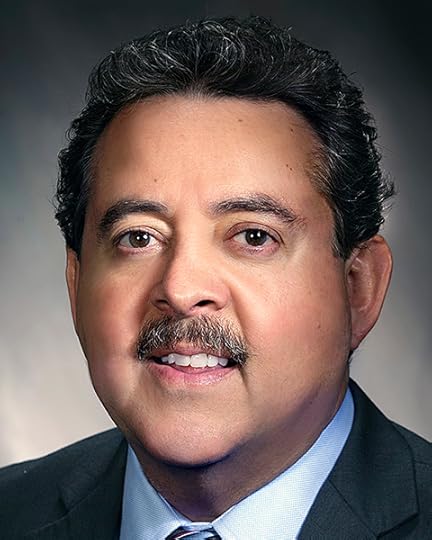 Diaz-Infante
Diaz-InfanteThe apartments are named after the former Community Housing Improvement Systems and Planning Association president who died unexpectedly in 2021. Diaz-Infante grew up in Salinas and was the child of farmworker parents. He devoted most of his working life to providing affordable housing for low- and moderate-income households from all walks of life, and was part of CHISPA for over two decades.
Current CHISPA President and CEO Geoffrey Morgan said that his organization is happy for the families who will be housed at the complex and stressed CHISPA’s resolve in doing everything it can to create more housing and support more funding initiatives aimed at ending this region’s housing crisis, including another project coming to East Garrison.
“We’re about to go outside to cut a ribbon to commemorate this great moment where we have 65 families out of 1,800 who applied and came here,” said Morgan. “Basically the best week I’ve had at CHISPA was the week when we had two families that we moved in one after the other. One, a family of eight, that was living in Watsonville in a garage … and one of which was living in a one-bedroom trailer and has a resident who is actually an aerospace engineering major at Stanford University.”
In a 2015 essay for Zocalo, a publication of Arizona State University, Diaz-Infante captured the battle CHISPA and other affordable housing advocates face in Monterey County.
“We see a lot of overcrowding in our homes and neighborhoods here, with multiple families crammed into small homes or apartments,” Diaz-Infante wrote. “Overcrowding creates all kinds of stresses in people’s lives, which makes it even more important to create welcoming spaces where neighbors can get to know each other.”
The grand opening ceremony was held in the community room of the apartment complex where classes and activities are provided each week for apartment residents and others in the East Garrison community.
The Alfred Diaz-Infante Apartments are the second affordable apartment complex built at East Garrison as required by the County of Monterey’s East Garrison Specific Plan. The subdivision’s developer, Century Communities, donated the land to CHISPA as the initial step in a complicated, multi-layered financing structure, according to CHISPA.
Since its incorporation in 1980, CHISPA, the largest private, nonprofit housing developer based in Monterey County, has built and renovated 2,447 single-family homes and apartments for low and moderate-income people in Monterey, San Benito and Santa Cruz counties.
The CHISPA apartment complex not only provides quality, affordable housing, but its community room activities include after-school programs, compute classes, tutoring, arts and crafts, health and wellness education, and social events. This summer, CHISPA is transporting children on field trips to Point Lobos Reserve, the Big Sur Land Trust and Elkhorn Slough.
Catherine Stedman, Central Coast Community Energy spokesperson said she met Alfred Diaz-Infante decades ago and remembers him as a gentleman and a truly effective and passionate leader “whose legacy all of us must work to keep alive.”
Central Coast Community Energy contributed $165,000 to the Alfred Diaz-Infante Apartment project as part of the network of supporters that made the project possible.
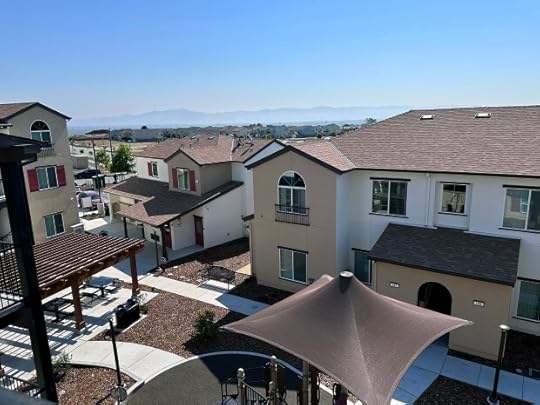 CHISPA held a grand opening of its Alfred Diaz-Infante Apartments at the East Garrison community on Thursday, July 11, 2024. (James Herrera/Monterey Herald)
CHISPA held a grand opening of its Alfred Diaz-Infante Apartments at the East Garrison community on Thursday, July 11, 2024. (James Herrera/Monterey Herald)Jane Parker, former Monterey County District 4 Supervisor (2008-2020), said that the East Garrison development was approved nearly 20 years ago after going through the county approval process. Parker’s district included East Garrison.
“Even when everyone agrees the project is good, the need is important, it can take a long time for us to get to moments like this,” said Parker. “To do this kind of work takes persistence, creativity and a touch of luck.”
Parker said she appreciates that fact that the developers turn over the affordable part of these projects to nonprofit builders who are committed to quality, getting the job done and who can find the funding.
“Alfred Diaz-Infante was the head of the organization and really inspired so much of this, and the staff did the legwork, which is absolutely critical,” said Parker.
Morgan said the Alfred Diaz-Infante Apartments represent more than two decades of effort, all of which reaffirms CHISPA’s commitment to creating more affordable housing in Monterey County.
The next project for CHISPA, said Morgan, will be another 66-unit affordable family rental housing complex in East Garrison similar to the Alfred Diaz-Infante Apartments.
Other speakers at the grand opening event included Pfianne Cline, CHISPA Board of Directors chair, Jonathan Goren, representative for Congressman Jimmy Panetta, Kate Daniels, representative for Senator John Laird, Mauricio Arias, representative for Assemblymember Dawn Addis, and Assembly Speaker Robert Rivas, Glenn Church, Monterey County Board of Supervisors District 2, James Vossoughi, Chase and Theresa Alvarado, Pacific Gas and Electric Company.
 The apartments are named after the former CHISPA president who died unexpectedly in 2021. Diaz-Infante grew up in Salinas and was the child of farmworker parents. He devoted most of his working life to providing affordable housing for low- and moderate-income households from all walks of life, and was part of CHISPA for over two decades. Thursday, July 11, 2024. (James Herrera/Monterey Herald)
The apartments are named after the former CHISPA president who died unexpectedly in 2021. Diaz-Infante grew up in Salinas and was the child of farmworker parents. He devoted most of his working life to providing affordable housing for low- and moderate-income households from all walks of life, and was part of CHISPA for over two decades. Thursday, July 11, 2024. (James Herrera/Monterey Herald)
How to make the perfect pierogi at home
Gretchen McKay | (TNS) Pittsburgh Post-Gazette
PITTSBURGH — Olive Visco has always loved to cook the old-school Polish foods she grew up on, sometimes even for friends in her adopted city of Pittsburgh.
But until the COVID-19 pandemic stymied her career as a bar manager, the Venango County, Pennsylvania, native never dreamed she’d make an actual living from rolling, folding and pinching her maternal grandmother Statia’s recipe for pierogi and selling them via social media under the handle @polsaklaskapgh.
Upon earning a degree at Chatham University in 2016, “I wanted to make food videos or maybe be a PR person for a restaurant,” she says.
After falling in love with the city’s burgeoning food scene, she instead ended up working both front and back of house jobs at Downtown’s now-closed Union Standard.
Visco had just lost her next job as bar manager at Iron Born Pizza in the summer of 2020 when she started selling her homemade pierogi on Instagram. Unemployment checks were slow to arrive, “and I needed to make money” to cover rent for the Bloomfield apartment she shared with her pugs, Oyster and Mussels.
“So I thought, ‘What am I really good at?’”
While most of the restaurant jobs she’d taken since age 15 involved waitressing or bussing tables, she’d also worked on the line at Iron Born before taking over its bar program in 2019. So while she’d never cooked for a living per se, she wasn’t a complete novice either.
In fact, growing up on a 100-acre llama farm in Franklin with “pretty hippie parents” — her father, Kip, is a third-generation family physician and her mom, Victoria, was head of PR at a local hospital — Visco was in the kitchen at a very early age learning to make the foods of her Polish heritage.
Traditional dishes like golubki, mizeria and the cold beet salad known as surówka z buraków were always on the table for special occasions and family holidays. By age 6 or 7, Visco was also mastering the art of pierogi making at the side of her Polish “bachi,” despite the beloved matriarch’s inability to speak due to early onset dementia.
And not just any pierogi, but plump, hand-pinched dumplings with beautifully braided edges and umami-packed fillings like kapusta, a Polish cabbage dish that marries sauerkraut with onions, mushrooms and a pinch of sugar with the hot sizzle of white wine.
Fueled by muscle memory built up over time, “She made pierogi until the year before she died,” Visco remembers of her grandmother with a wistful smile.
That her own dumplings would prove just as mouthwatering to pierogi fans when she offered them for sale by the dozen was nothing short of amazing. “I’m not from Pittsburgh, so I didn’t understand the novelty of it,” she says with a laugh.
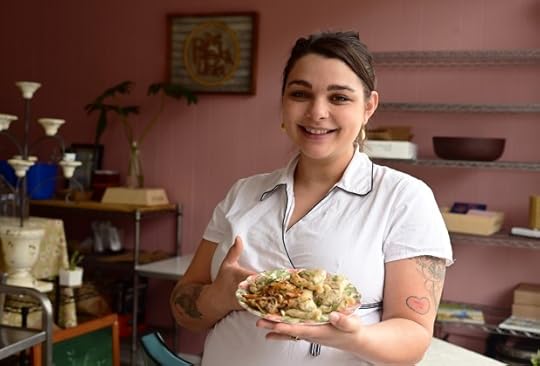 Olive Visco, owner of Polska Laska, holds her signature pierogi in her Sharpsburg restaurant. (Lucy Schaly/Pittsburgh Post-Gazette/TNS)
Olive Visco, owner of Polska Laska, holds her signature pierogi in her Sharpsburg restaurant. (Lucy Schaly/Pittsburgh Post-Gazette/TNS)The 30-year-old mother-to-be soon learned that people in the ‘Burgh don’t just like pierogi; they love them. “So I thought, ‘This is the city for it.’”
Her many connections in the hospitality industry and on social media made selling the dumplings she hand filled and folded in her tiny kitchen easy. Soon, friends and friends of friends were ordering them to the tune of 500 a week on Instagram and Facebook.
“People were lining up outside my apartment on Penn Avenue,” she recalls with a grin. “It was a lot of hard work,” but within a year, she was really catching on as the Pierogi Girl of Bloomfield.
She named her growing takeout business Polska Laska, slang for “Polish Chick.”
“I wanted something fun, and a little slaying,” she explains. “It’s a little sassy, a little flirty, a little naughty” — kind of like the girl herself, who at almost 9 months pregnant, couldn’t stop laughing and joking as she rolled out some dough for a demo on a recent Monday — wearing a pair of dangling pierogi earrings.
Eventually, Visco’s sales outgrew her home kitchen and she moved operations — first to a catering kitchen in Etna and then to Gooski’s in Polish Hill, which is owned by her husband Sky’s family.
Last fall, she took a giant leap of faith and set up shop in a corner storefront on North Canal Street in Sharpsburg that formerly housed Mindy’s Take & Bake. She wasn’t looking to move, she says, but couldn’t pass up what seemed like a perfect opportunity when a customer told her it was available.
Today, the spacious commercial kitchen filled with professional equipment allows her and former Mindy’s employee Shaina Satterfield to crank out around 1,500 pierogi a week in an amazing variety of flavors.
Church lady pierogi these are not. While potato cheddar, farmer’s cheese and kapusta are, and will always be, perennial favorites, Visco is not afraid to experiment with what some might consider crazy fillings.
The hundred-plus varieties she’s dished up over the years include everything from bacon cheeseburger, Philly cheesesteak and meatloaf to Buffalo chicken, blueberry cheesecake and “Weak Night” (made with Maruchan ramen, cream cheese, egg, Parmesan and scallion). In early June, “cowboy” pierogi filled with chorizo, corn, black beans and scallions were available as a special.
“I try to create as much flavor as I can,” she says.
She also occasionally wraps the dough around seafood just to be fun, even though she knows it’s a hard sell. A lemony, herb-kissed clams casino was probably her weirdest pierogi, she says. “But it wasn’t a crazy amount.”
Also a little different: She uses the vegan dough she grew up on instead of one enriched with dairy.
“Eggs and sour cream were expensive, and a luxury for my grandparents,” she explains. “So our dough has always been just flour, water and salt.”
The resultant pierogi are thinner and crispier than traditional church lady dumplings and easier to make vegan across the board.
Many are crafted using local ingredients that are in season — this spring she made them with ramps, and she’s currently contemplating pairing mulberries with farmer’s cheese — and they are sold both fresh and ready to cook as well as frozen. (They keep for about three months in the freezer.) They cost $12 for 6 and $20 for a dozen.
Due to give birth to her first child in July, Visco plans on taking a short sabbatical over the summer to prepare for turning the takeout business into a small sit-down cafe. While the grand opening date is still in flux, she expects to open it sometime in the fall with seating for around 25 customers.
Along with pierogi — which you can also find at Kelly’s Bar and Lounge in East Liberty and on weekends at pop-ups — customers will be able to enjoy everything else she currently offers for takeout, including sauerkraut pancakes, Polska platters, stuffed cabbage and haluska. Most sides cost $5.
She’ll also return to doing pop-ups and teaching classes, as well as the occasional catering job.
“Cooking was always just a hobby,” she says. “I never dreamed that one day I would own a business where I’d be able to cook as well.”
While at times Visco feels overwhelmed as a small business owner, she hopes that every year she’ll be able to step up with something bigger, better and more creative.
“I love feeding my community,” she says. “For me, it’s not about getting rich but creating a space to cook some really good food that makes people feel good about spending their money. I feel really lucky to be able to work hard and have something to show for it.”
The fact she’s passing down her Polish heritage to others by passing down her grandmother’s recipes?
“What I do is a privilege for sure,” she says. “To do something I love and make people happy and make connections.”
Can’t wait until she’s back in the kitchen or just curious to try making pierogi yourself? Because her super-simple dough is so consistent, Visco is confident anyone could learn to make her pierogi once they get a feel for it.
“It’s knowing the [proper] texture,” she says, which can take some time to perfect. “It’s not a hard know, but you know when you know.”
For beginners, she offers some tips.
—Add the flour slowly, one cup at a time, continually stirring as you go. She starts with a metal whisk, but switches to a folding action with a rubber spatula when the dough starts to stick. The goal is dough that comes together into a raggedy ball.
—When it’s time to knead the dough, don’t be afraid to use a surprising amount of flour. “When I teach classes, my students always ask, ‘More flour?’ And I promise you, more flour!” That includes dusting the dough itself in addition to the work surface.
—Figuring out when the dough is ready for rolling is all about touch. The ball should feel soft and supple, and quickly release when you poke your finger into it. Also: It doesn’t need to rest like pasta dough. You can use it immediately.
—While rolling, use your fingers to flatten out any dimples in the dough and flip it a few times so you roll on both sides. The finished product should be very thin without being translucent. “We don’t want the dough to take over the story,” she says, “by overpowering the filling.”
—Any 3- to 4-inch circular glass with a sharp edge can be used to cut the dough into circles, and you can also find any number of pierogi cutters online. Her preferred tool is the same stainless steel Koriko cocktail shaker she used while bartending.
—To release the dough circles without tearing them, give the glass a push and a little wiggle. They should be slightly sticky so they seal properly when crimped, but still come out in “gorgeous little Polish moons.”
—Visco is pretty generous with the filling — she uses a 2-ounce ice cream scoop — but “I don’t want my pierogi to be skimpy,” she says, “and I don’t want a big dough ball.”
—Be sure to drain them on a wire rack after boiling in salted water. (They’re done when they float to the top). And for a crispier meal, fry them in oil on both sides over medium-high heat instead of butter, which can easily burn. “But butter with your onions is always a good thing to do,” she says.
——
Kapusta PierogiKapusta is a traditional Polish cabbage dish made with onions, mushrooms and sauerkraut. Full of umami, it’s often served with broth as a soup, but at Polska Laska in Sharpsburg, Olive Visco uses it as a savory filling for her handcrafted vegan pierogi.
Aldi’s jarred sauerkraut is her preferred brand not only because it’s the cheapest, but also delicious, “and I transform it anyway.”
She likes to use white wine to deglaze the mixture as it cooks in a pan but, depending on your taste, “a nice Polish lager would be delicious, too!” she says. Water is also fine.
When making the dumplings, remember that flour is your friend! “The key is to keep your dough and surface sprinkled with flour at all times to prevent dough sticking to the table,” she says.
You can re-roll dough scraps, but only once. After that, it’s too tough and dense.
For kapusta filling
1 24-ounce jar sauerkraut
1 medium white onion, chopped
Handful of chopped mushrooms
1 bay leaf
Salt and pepper
2 teaspoons sugar
Water, white wine or beer, for deglazing
For dough
2 cups water
Salt
6 cups of all-purpose flour
For serving
Caramelized onion, sour cream and chopped fresh dill
Make filling. Add sauerkraut, onion, mushrooms, bay leaf and sugar to a wide pan or pot. Stir to combine, then season to taste with salt and pepper.
Cook over medium heat until mixture is cooked down and slightly brown on the bottom of the pan.
Add a splash or two of wine, water or beer to deglaze pan. Repeat until mixture is braised down and all the ingredients are caramelized. Set aside while you make dough.
Prepare dough. Start by putting the 2 cups of water into a large mixing bowl and then salt the water like the ocean.
Add 1 cup of flour at a time and whisk it into the water. After about 2 cups of flour, you will notice the mixture will have a batter consistency and will become a little thicker and hard to use a whisk for.
Switch over to a rubber spatula and start adding flour 1 cup at a time and stirring, scraping the sides, and folding it into the mixture.
Once the dough is thick enough that it’s becoming a shaggy-looking blob, you can flour your work surface and put your shaggy blob onto it. The key is to keep your dough and surface sprinkled with flour at all times to prevent dough sticking to the table.
Knead your dough out with a heavy dusting of flour at a time and form a firm (not soft, but not sticky) ball of dough. You should be able to poke the dough and create a deep print where the dough does not stick to your finger.
Now it’s time to roll out your dough. Pat your ball of dough into a nice flat disk. Make sure it’s dusted with flour. Dust your rolling pin, too. Roll out your dough in all directions but do not force a stretch of any kind.
Dust the rolled out dough with flour. Flip it. Dust it again. Roll it again. The dough should be very thin, but not translucent.
Cut circles into the dough using a thin-edged circular tool such as a water glass or cocktail shaker.
Place about 1 1/2 ounces of your choice of filling into the center of the circle.
Fold one side over, leaving a lip of space between the edge and the filling. This is where you can crimp, fold or braid. Just make sure it’s sealed on the side.
Add your pierogi to a pot of boiling water, being careful not to crowd the pot. Once a minute or two has gone by and the pierogi have floated to the top of the pot, it’s time to sieve them out and lay them on a rack to drain.
In a frying pan, add a couple tablespoons of your preferred high-heat oil. The oil should cover the whole bottom of the pan. Once it is a nice medium-high heat, add pierogi and crisp them up on each side until golden brown.
Serve with caramelized onions, sour cream and fresh dill.
Makes about 48 pierogi.
——
— Olive Visco, Polska Laska
___
©2024 PG Publishing Co. Visit at post-gazette.com. Distributed by Tribune Content Agency, LLC.
‘Two Envelopes’ method aimed to ease tensions when a loved one dies
Rusty Rosman has heard the stories — so many stories — about families feuding after the death of a loved one.
Disputes over funeral arrangements, financial considerations and other concerns “add chaos to a time for grieving,” Rosman said.
In one instance, brothers argued whether dad — who rarely wore a suit — should be buried in a suit or in his favorite coveralls.
In another, a father had remarried and moved to another state, where he died. Families in two states wrangled over what to do, before choosing cremation and dividing the ashes.
Then there was the mother who told her daughter the dress she wanted to wear at burial. But when the woman died, the dress could not be found. Mom had lost weight, given the dress to charity and failed to tell anyone.
It doesn’t have to be so contentious and frustrating, says Rosman, whose service as a community leader and longtime member of the Commerce Township Zoning Board of Appeals, has earned her a reputation for straight talk.
Indeed, she says, loved ones approaching the end of life can help minimize family confrontations by dispensing straight talk of their own on their wants and expectations.
“My advice is: ‘If you want something to be a certain way, then say so. Don’t leave it for others to decide,’” Rosman said.
 Rusty Rosman, a first-time author and lifelong Commerce Township resident, has published “Two Envelopes: What You Want Your Loved Ones to Know When You Die.
Rusty Rosman, a first-time author and lifelong Commerce Township resident, has published “Two Envelopes: What You Want Your Loved Ones to Know When You Die.In a new book chock-full of advice, Rosman explains how using two simple envelopes can clear away the confusion and dissension.
One envelope should include written instructions for funeral arrangements and the like. The other envelope should spell out what is to be done with belongings not covered in legal documents — from passwords to insurance policies and e-mail addresses.
It’s important, as well, to let trusted family members know where the envelopes are kept and to place the envelopes where they cannot be read by others.
The “Two Envelopes” method, she said, provides peace of mind by promoting peace in the family. Conveying wishes regarding your wishes and estate ensures that “your voice, your wishes, continue to guide your loved ones after your death.”
With discretion and empathy, Rosman describes her method in “Two Envelopes: What You Want Your Loved Ones to Know When You Die” ($19.99, Amazon.com). She describes the book as “a guide” to navigate the practical and emotional aspects of end-of-life planning.
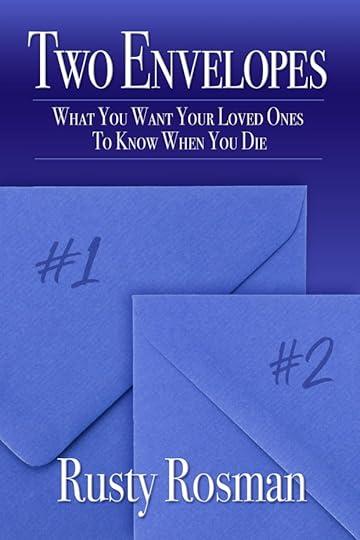 The book is described as “a guide” to navigate the practical and emotional aspects of end-of-life planning. (Photo courtesy of Morgan Street Media Services)
The book is described as “a guide” to navigate the practical and emotional aspects of end-of-life planning. (Photo courtesy of Morgan Street Media Services)One of four children, Rosman said she spent years assisting her parents and her in-laws as they aged, encouraging them to write out their final wishes for funerals, mourning periods and belongings. By having her parents put their wishes in writing, she said, made heartbreaking deaths easier for children to endure.
“We did exactly what our parents requested and there was no fighting,” Rosman said. “By doing two envelopes, you are helping your loved ones through a difficult time.”
Related ArticlesBooks | Local books: Local naturalist writes a tale about whales Books | 5 reasons you should buy Questlove’s new book, ‘Hip-Hop Is History’ Books | Local books: Compelling shorts to read in the moment Books | 5 books to read in celebration of Pride Month Books | Review: ‘We Refuse’ is a searing history of resistance that focuses on Black joy Rosman’s sister, Margo Gold, said “Two Envelopes” provides “thoughtful steps for important, too-often-postponed decisions and how to share them effectively with family and others.
“It shows each of us how a simple envelope can be transformed into a meaningful vessel of love.”
Rosman, a first-time author and lifelong Commerce Township resident, said her life experience guided her to write the book.
“I remember walking toward the room with our computer, thinking about two envelopes and I started writing,” she said.
Three weeks later, she said, the book was completed.
“It just flowed,” she said.
Horoscopes July 12, 2024: Topher Grace, make the first move
CELEBRITIES BORN ON THIS DAY: Shai Gilgeous-Alexander, 26; Malala Yousafzai, 27; Kimberly Perry, 41; Topher Grace, 46.
Happy Birthday: Pay attention to domestic expenditures. Fine-tune your routine and cut back where you can. An innovative approach to how you live, operate and conduct your affairs will determine the outcome. Prevent anyone from taking advantage of you or overstepping boundaries that can cost you financially or emotionally. It’s up to you to make the first move and to see your plans through to the finish line. Your numbers are 3, 12, 20, 26, 32, 38, 49.
ARIES (March 21-April 19): Mix and mingle, explore your community and make peace your mantra. How you get along with others will determine how much impact you will have. If you use your ingenuity to cut corners, a change will bring financial gain. Make socialization, entertainment and romance your priorities. 3 stars
TAURUS (April 20-May 20): Observe rather than interfere. Being stubborn won’t help you win a debate. Pay attention to your spending habits, and create a budget to help you avoid debt and stressful situations. A positive change will parlay into support and the ability to get things done. 3 stars
GEMINI (May 21-June 20): Take it upon yourself to update your look or improve your surroundings. Dealing with children, parents and close friends with love and support will encourage them to confide in you. The knowledge you acquire will help you do what’s right and gain respect. 5 stars
CANCER (June 21-July 22): Take a deep breath and prepare to move forward. Fact-check, then question your motives to ensure you are on the right path and not on an emotional joyride. Success requires discipline, fair play and an understanding of what to do and how to gain support. 2 stars
LEO (July 23-Aug. 22): Share stories. If you offer an exciting adaptation of something you encounter, your popularity will soar. Look for opportunities to network and mix business with pleasure. You can apply pressure if you do so in an amicable manner. Shoot for the stars and make romance a priority. 4 stars
VIRGO (Aug. 23-Sept. 22): Lower anxiety; don’t overload your plate or indulge in something unnecessary or costly. Focus on the adjustments that will ease stress and make your life simpler and more affordable. Learn from mistakes and set boundaries if someone pressures you or takes advantage of you. 3 stars
LIBRA (Sept. 23-Oct. 22): Express your desires, speak from the heart and make travel, participation and helping others your mission. A positive personal or physical change will encourage a better response from those you encounter and promote additional opportunities. Go to where the action is. Love is favored. 3 stars
SCORPIO (Oct. 23-Nov. 21): Take care of business, live up to your promises and let your actions speak for you. Deep discussions will lead to unnecessary repercussions. Take the road less traveled and put some muscle behind your intentions. A change of plans will turn out better than you anticipate. 3 stars
SAGITTARIUS (Nov. 22-Dec. 21): Don’t share personal information. Someone will twist your words or use them against you. Focus on money, health and contracts. Read the fine print, and stick to your plans and budget. A financial gain is apparent. Romance and shared expenses are favored. 4 stars
CAPRICORN (Dec. 22-Jan. 19): Participate and experience what life has to offer in your community. Distance yourself from anyone using hype and pressure tactics to take advantage of you. Invest in yourself, not someone else. Learn from the rhetoric you hear and adjust it to fit your needs. 2 stars
AQUARIUS (Jan. 20-Feb. 18): Concentrate on home, family and efficiency. Declutter and make room for something you want to pursue. Speak up and ask questions, and you’ll receive input that helps you implement a plan. A physical change will result in better health and confidence. Romance is in the stars. 5 stars
PISCES (Feb. 19-March 20): Change can be advantageous if you stick to a budget. Discipline and originality will play roles in your success. Look at the big picture and change only what’s necessary. Say no to temptation and overindulgence. 3 stars
Birthday Baby: You are original, persistent and opportunity-driven. You are outspoken and unpredictable.
1 star: Avoid conflicts; work behind the scenes. 2 stars: You can accomplish, but don’t rely on others. 3 stars: Focus and you’ll reach your goals. 4 stars: Aim high; start new projects. 5 stars: Nothing can stop you; go for gold.
Visit Eugenialast.com, or join Eugenia on Twitter/Facebook/LinkedIn.
Want a link to your daily horoscope delivered directly to your inbox each weekday morning? Sign up for our free Coffee Break newsletter at mercurynews.com/newsletters or eastbaytimes.com/newsletters.
July 11, 2024
New bill allows more toddlers to enroll in preschool
Monterey >> More families on the Peninsula will have the opportunity to send their toddlers to preschool after legislation passed earlier this month that revised the state’s early education requirements. Now, preschool programs across the county are gearing up to enroll even younger children.
Senate Bill 163 was passed on July 2 and became effective immediately, which revised the requirements for the California State Preschool Program. Until June 2027, the program will be able to enroll two year old’s at all participating schools. Income requirements have also been raised, meaning more families now qualify for free early education. The last revision eliminates required proof of employment or enrollment to qualify for the subsidized program.
“By making this opportunity available, for now it would allow us to enroll families that need that special service and not leave anyone out,” said Sonia Jaramillo, program director for the Monterey County Office of Education Head Start program.
The county Office of Education currently serves around 700 three and four year old’s through its Head Start and California State School Program. Because of the revisions, the county will begin accepting two year old’s immediately.
Jaramillo advises families with toddlers to call the office or visit the school sites if they wish to enroll because “this is the time. They need to go now. We still have space at some of the sites.”
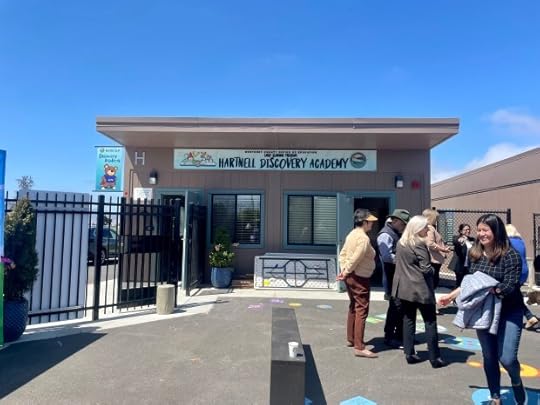 Located on Hartnell College’s East Campus, the Discovery Academy is accepting applications for its first academic year this fall. (Andrea Valadez – Monterey Herald)
Located on Hartnell College’s East Campus, the Discovery Academy is accepting applications for its first academic year this fall. (Andrea Valadez – Monterey Herald)Education for two year old’s doesn’t look too different from what children will encounter in transitional kindergarten or kindergarten itself, according to Tia Robinson, coordinator for the Monterey Peninsula Unified School District’s Early Childhood Education.
The main priorities when teaching two year old’s are building social and emotional skills and motor skills, according to Robinson. Through the integration of younger students, SB 163 will “help us be able to serve the mass majority of early childhood students.”
Monterey Peninsula Unified plans to add and expand classrooms to accommodate its new learners. By welcoming more families into the classroom, early education “encourages them to be a part of the district early on so families are able to get involved with the district’s programs,” said Robinson.
Children are eligible for the California State Preschool Program if the family income level is at or below 100% of the state median income of $84,818 for a family of two. The requirement has been raised by $400, meaning more families will now qualify for the free preschool program. This change is “good for families but it’s not good enough because we still have families that miss that qualification by a few dollars,” said Jaramillo.
In addition to the free program, Monterey Peninsula Unified also offers fee-based programs at its four preschool locations: Monterey, Seaside and Marina Childhood Development Centers and the Dual Language Academy of the Monterey Peninsula. The program is $850 per month for community members and $590 for district employees. During the half and full-day classes, the curriculum is geared toward creating a seamless transition to kindergarten through social-emotional skill building, language development, multicultural education, music, arts and crafts.
A study done by the Public Policy Institute of California showed slightly negative social-emotional learning outcomes for multilingual students. The institute suggested inclusive programming for these students, which Head Start does, with many of its instructors being fluent in Spanish.
A main focus of the Head Start program is “prepping the kids for science component requirements for the 21st century,” said Jaramillo. The county’s Discovery Academy, which is accepting applications for its first cohort now, has a focus on science, technology, engineering, arts and mathematics. Students will also have access to guitar and folkloric dance instructors. It’s important to “provide services for the whole child,” said Jaramillo.
The increasing need for early learning for two year old’s is likely due to parents simply needing childcare during the day, according to Robinson and Jaramillo.
Robinson said she mostly hears from parents that they need childcare while they’re working or going to school, so having their kids building their social and emotional developmental skills while being looked after is a plus.
“The need for families to have two heads of household working (is high) which triggers a need for childcare,” said Jaramillo. She also said parents have expressed a need for full-day services, so Head Start will now be offering six and nine-hour school days, providing parents with flexibility.
For more information on enrollment eligibility, visit: https://www.montereycoe.org/divisions-services/early-learning-program/enrollment-eligibility and https://preschool.mpusd.net/apps/pages/index.jsp?uREC_ID=3865321&type=d&pREC_ID=2476914.
Monterey County health official who fought for farmworker protection dies
SALINAS – Walter Foo Wong, a long-retired Monterey County health official known for his dogged pursuit of farmworker protection from pesticide poisoning, died June 29. Neither his age nor the cause of death was disclosed.
Wong began working for the Monterey County Health Department in 1955 and retired in 2001 after 46 years.
As the Environmental Health Officer, a position Wong achieved in 1971 after working his way up the ranks and earning a master’s degree from the University of Hawaii, he was instrumental in getting signs adopted warning of pesticide applications in agricultural fields. Monterey County was the first to adopt an ordinance requiring the warning signage.
It wasn’t easy. Wong, the California Rural Legal Assistance and the United Farm Workers faced stiff opposition from growers and even the county agriculture commissioner. Following Monterey County’s lead, California passed a law requiring the signage in 1983.
“That was a public health effort that succeeded,” said retired state Sen. Bill Monning on Thursday. “You can keep treating victims or you can go to the source and try to avert the poisonings.”
It was a time when Wong, the UFW and the CRLA were accused of staging poisonings by growers and the ag commissioner. Despite the contentious nature of the effort, Wong’s single-minded position was that his job was to protect the health of county residents, including farm workers, Monning said.
Following negotiations, growers and the ag commissioner eventually came around in support of the Wong’s signage effort.
“It was bold and courageous to speak in favor of the need for protection of farmworkers,” he said. “He didn’t pick sides; he stepped up and argued that farm workers needed greater protections.”
Early in his career, Monning worked as a staff attorney for both the United Farm Workers and the CRLA and advocated for the sign ordinance. After retirement, Wong came out in support of Monning’s successful state senate bids in 2012 and 2016.
Wong’s efforts to make posting warning signs law began after farmworkers were sickened in 1979, 1980 and 1981, mostly from pesticide drift from fields where pesticides were being applied. In 2021, Monterey County ranked sixth among California’s 58 counties for the amounts of pesticides applied, with more than 9 million pounds used on 6.5 million acres of vegetables, according to the state Department of Pesticide Regulation.
Wong was born in San Francisco and his family moved to Salinas when he was a boy. Wong’s father, Harry Yee Wong, died when Wong was in eighth grade.
He began working part-time to help support his family after his father’s death. Wong worked at several restaurants owned by his father in Salinas. He was graduated from Salinas High School where he was active in student government.
He entered the pre-med program at University of California, Berkeley. But his responsibilities to his mother and his brothers and sisters were great. Instead, opted to go into the public health sector. Wong first became an environmental health specialist for Stanislaus County.
When his mother died in 1955, Wong returned to Salinas to care for his younger brothers and sisters. Monterey County had an opening for an environmental health specialist, and in September 1955, Wong began his career with Monterey County Health Department.
He was the first person of Chinese ancestry to hold such a position in California.
He has been the president of the California Association of Environmental Health Administrators and president of the California Conference of Directors of Environmental Health. Wong was also active with the Monterey County Historical Society.
In addition to his mother and father, Wong was preceded in death four brothers and a sister. He is survived by one and many nieces and nephews.
A private service was held Wednesday at Garden of Memories Memorial Park in Salinas.



